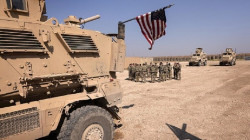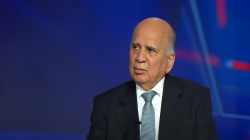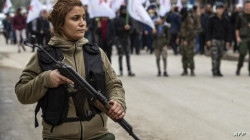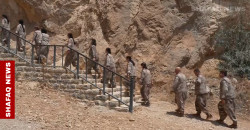Erdogan’s outreach to Assad may signal final curtain on Syria War, jeopardizes the Kurds: report
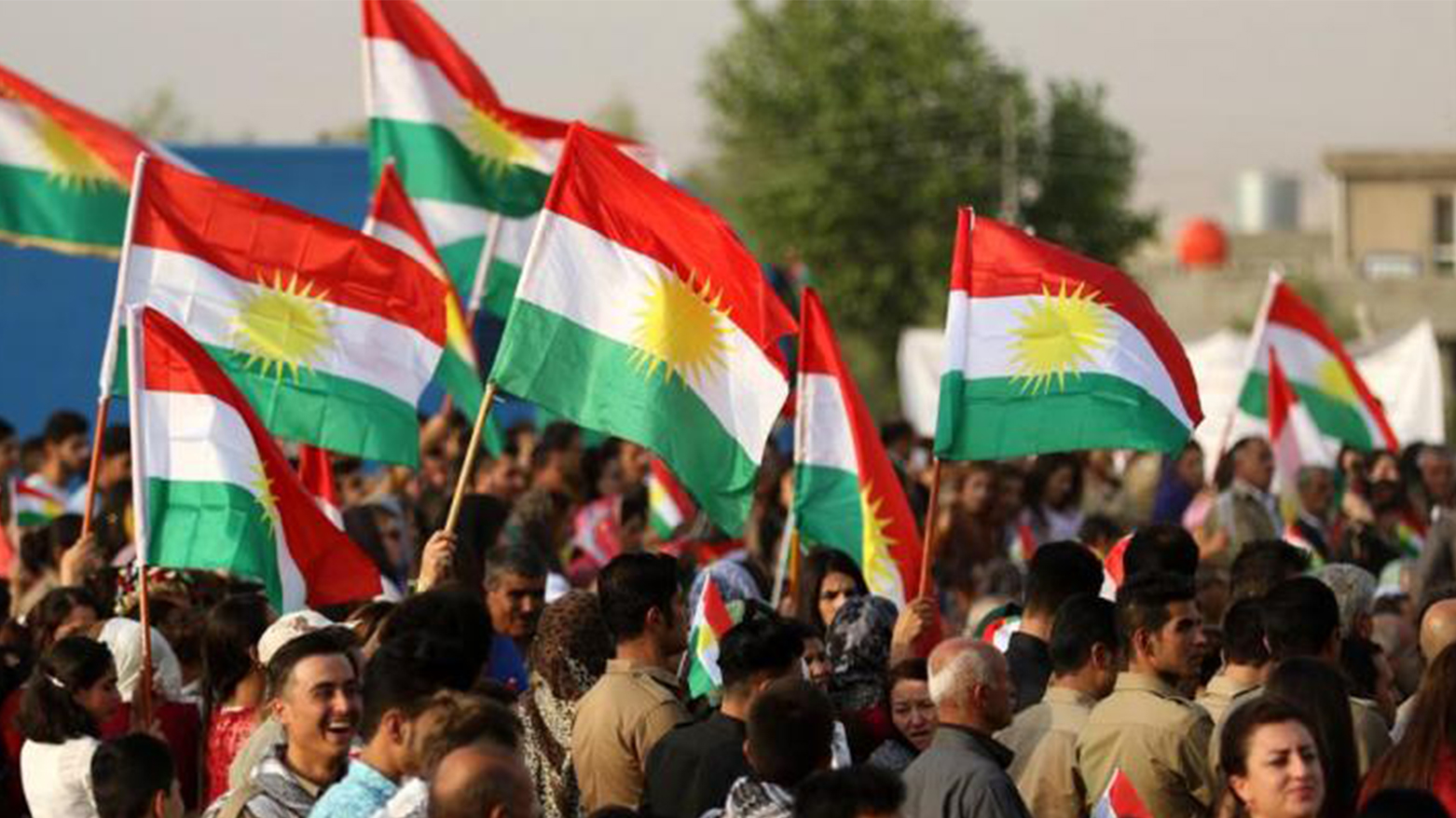
Shafaq News/ Turkiye’s overtures to Syrian President Bashar al-Assad, Syria’s readmission to the Arab League, the election of Iranian reformist Masoud Pezeshkian, and the never-ending war in Gaza all point to the need for the U.S. to recalibrate its Syria policy.
Washington must come to terms with the fact that the entire region is normalizing relations with Damascus and Assad.
The present U.S. policy that was predicated on regime-change in Damascus has failed. U.N. resolution 2254, which calls for a democratic transition in Syria to bring the Syrian opposition to power, has no chance of success. So too the effort to separate Syria from Iran.
No more realistic is the effort to establish a quasi-independent Kurdish enclave in northeast Syria. It is opposed by each of its more powerful neighbors, particularly Turkiye. Each of these three policies — regime-change, rolling back Iran, and preserving a Kurdish-run statelet in northeast Syria — were predicated on the success of regime change in Damascus. None of these make sense today.
With a limited presence of 900 soldiers, Washington helped the Syrian Democratic Forces (SDF), a Kurdish-led force, maintain control over the northeastern quarter of Syria, the breadbasket and oil reserve of the country. While the initial impetus behind the deployment was combating ISIS, the new unspoken policy is now to “roll back” Iran by blocking the main chain link of the “Axis of Resistance”: Syria.
With the election of Pezeshkian, who has indicated openness towards the West and a desire to r-engage with the U.S. over nuclear refinement and sanctions, Washington should meet him halfway.
Through its southern border, Turkiye — the largest foreign actor in the war — established what is now known as the “Jihadi Highway.” This coordinated route facilitated travel from Turkish international airports to border towns, and finally, with weapons and directions into Syria. Dagestanis, Tunisians, Brits, and others, streamed in to join ISIS and other jihadist formations with Turkish benediction.
In due time, the unintended consequences of Erdogan’s support for Islamist fighters showed up on his doorstep. Waves of refugees crossed the border into Turkiye escaping the Syrian civil war. Today, Turkiye is struggling with societal tensions exacerbated by the presence of 3.7 million Syrian refugees in the country. Despite receiving upwards of $11 billion from the EU and the U.S. to deal with the refugee crisis, Erdogan has recently decided that the time is right for their departure.
Adding to the refugee question, Erdogan also finds the U.S.-maintained status quo in northeast Syria unacceptable. The Turkish president has made it clear that another independent Kurdish region on his southern border is anathema to him. In 2017 and 2019 he showed how far he was willing to go to block it: Operation Euphrates Shield and Peace Spring, touted as engagements essential to Turkish national security, saw the Turkish army invade northern Syria break up the links between the three Kurdish cantons of Afrin, Kobani and Jazireh.
After supporting Assad’s removal for 12 years, Erdogan now recognizes that the Syrian president is here to stay and prefers him on his southern border over an independent Kurdish enclave. Consequently, this July, Erdogan invited Assad to an official state visit in Istanbul. He offered to bring on the Russians as mediators and stated that a full diplomatic normalization is possible between the two countries.
Although Assad refuses to meet with Erdogan without first receiving a commitment that Turkiye will withdraw its troops from Syrian territory, Assad indicated openness to a tentative meeting. He is eager to reestablish Syrian sovereignty over the lands he lost to rebel forces and foreign armies. A revival of trade with Turkiye will also provide a much-needed lifeline to the ailing Syrian economy.
Assad is also eager to have an ally in the impending confrontation with the American-backed Kurds in northeast Syria. He seeks to leverage the threat of a Turkish invasion into SDF-controlled northeast Syria to negotiate a deal with Syria’s Kurds.
Assad has made it clear that he will not allow the Kurds to retain their own military, an outcome the Kurds will never agree to so long as U.S. forces remain in northeast Syria to ensure the region’s quasi-independence. Washington, however, cannot keep its troops in Syria forever and has made it clear to the Kurds that it will not help them establish an independent state.
With a new U.S. administration taking power in 2025, the time for the withdrawal of American troops from Syria has come.
As the war in Gaza nears its first anniversary, U.S. policy and credibility in the Middle East are in sharp decline. Turkish anger against the U.S. has been mounting ever since Washington began to arm Syria’s Kurds at the end of 2014. The establishment of a Kurdish-led autonomous region in northeast Syria shortly after, followed by the creation of the American-armed and trained Syrian Democratic Forces (SDF) only exacerbated the situation.
The U.S. has a window of opportunity to use sanction reform to get a favorable deal signed between the SDF and the Syrian government. In such a deal, the Kurds would retain a modicum of autonomy in exchange for the Syrian government’s reestablishment of sovereignty. After all, Syrian Kurds will always prefer living under the Syrian government to that of Turkiye.
Moreover, the Assads have always depended on the Kurds to balance the Arab tribes of the region. President Assad needs the Kurds in order to rule the northeast just as he needs them to ensure that neither al-Qaida or ISIS returns.
In short, there is a deal to be made between the Kurds and Damascus; the U.S. can use its leverage to make sure that it is the best one possible. A return to the Adana agreement of 1998 between Syria and Turkiye is the long-term outcome that appears most likely. It was helped along by the United States and ensured the only warm and stable period in Turkish-Syrian relations in the last 100 years.
As for the refugee question, considering the recent attacks on Syrians living in Turkiye, the U.S. government must consider the following question: Is it in the U.S. interest that some of the 3.7 million refugees return to an economically empowered Syria that has the boot of economic sanctions lifted from its neck, or for them to escape an increasingly hostile Turkiye via a treacherous journey on rubber dinghies headed to Europe, thus creating a second migrant crisis and further empowering the European far right?
The answer seems clear.
A sanctions-easing deal with the Syrian government will help secure the rights of the Kurds. Just as importantly, it will stimulate the economy enough to convince some Syrian refugees to return and stop Syrian residents from leaving.
The U.S. should not resist the will of its Arab and Turkish allies who seek normalization and the return of Syrians to their homeland. Many of America’s European allies are also eager to resume diplomatic relations with Damascus and to lift sanctions. Eight EU countries recently presented a position paper proposing that the EU renew diplomatic ties with Assad’s government.
They argue that the European policy of “regime change” and sanctions has “failed.” “The steps taken so far,” they point out, “have mainly hurt civilians and not the regime and authorities.” The foreign ministers demand a change in policy to one that creates “a reality where residents have the will and interest to stay in Syria and return to it.”
Only by lifting sanctions can the Syrian economy begin to grow again and give hope of a brighter future to some of the 90% of Syrians who live in poverty. If the U.S. continues to thwart the normalization process being pursued by its closest allies, Washington will be pushed out of the region. Erdogan’s effort to rekindle his erstwhile friendship with Assad is driven by their mutual desire to see U.S. troops withdrawn from northeast Syria.
The U.S. will only hurt itself and its Gulf and European allies by resisting this effort.
As for Iran, the U.S. must find an accommodation with it. This will not be easy, but the new reformist government led by Pezeshkian presents an opening that should be explored. U.S. policy toward Syria has become mired in the shadow war between Israel and Iran. In the long run, only a truce between the two will ensure regional stability.
In the meantime, a U.S. withdrawal from Syria will help jumpstart the Syrian economy, reduce tensions with our key allies in the region, and alleviate the refugee problem that is overwhelming Europe.
By Quincy Institute
Disclaimer: The views presented by the author do not necessarily reflect the official standpoint of Shafaq News Agency
